Exercise can create the perfect conditions for acne-causing bacteria and yeast to thrive on your skin, but following some simple tips can help stop breakouts before they start. Exercise has many benefits for the skin, such as increased blood flow and reduced stress-related acne. However, working up a good sweat can also cause breakouts due to the combination of sweat, oils, and bacteria on the skin. To help prevent post-workout acne, dermatologists recommend the following 10 tips:
1. Remove Makeup Before Your Workout
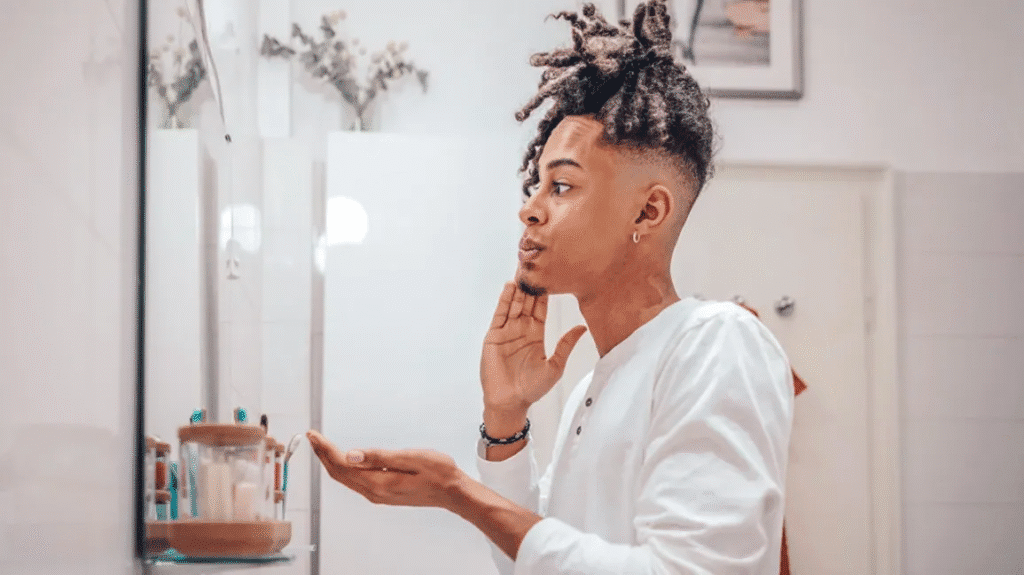
Dr. Susan Massick, a dermatologist at The Ohio State University Wexner Medical Center, advises cleansing your face before a workout to remove makeup. During exercise, increased blood flow causes the pores to open. Makeup can trap sweat and bacteria in the enlarged pores, leading to clogged pores and acne. It’s important to clean your face with a gentle, oil-free cleanser before your workout. If you can’t wash your face, use an oil-free makeup remover wipe to ensure your pores are clear before exercising.
2. Pull Long Hair Back and Off Your Face
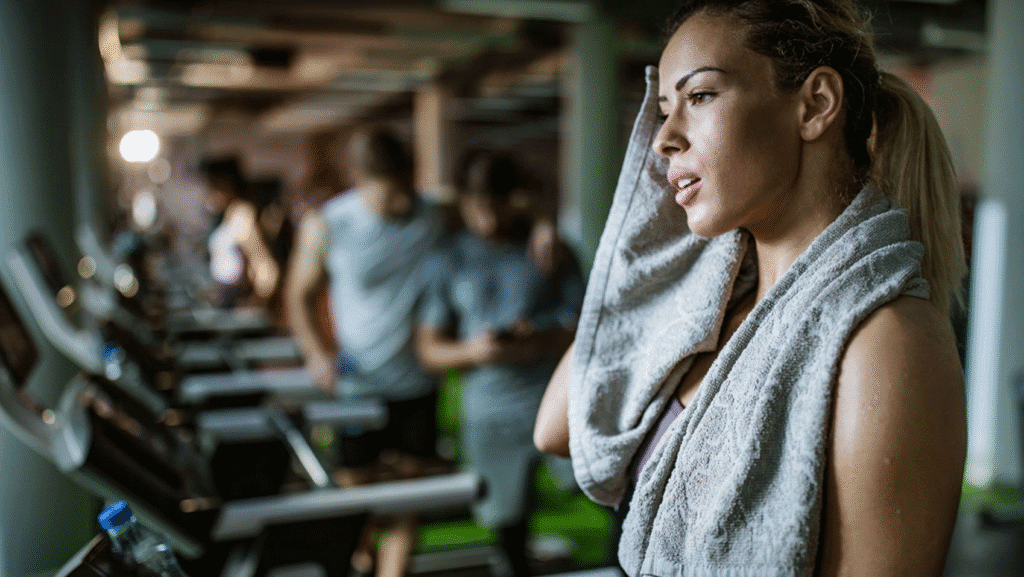
Massick also recommends pulling long hair back during your workout. Hair oils and products can transfer to your skin, and hair can trap moisture on your face. This trapped moisture creates the ideal environment for bacteria and yeast to thrive, leading to breakouts. Make sure to tie your hair up to keep it away from your face. Consider using a sweatband or hair tie designed for exercise to prevent hair from touching your skin.
3. Wipe Down Equipment That Touches Your Face
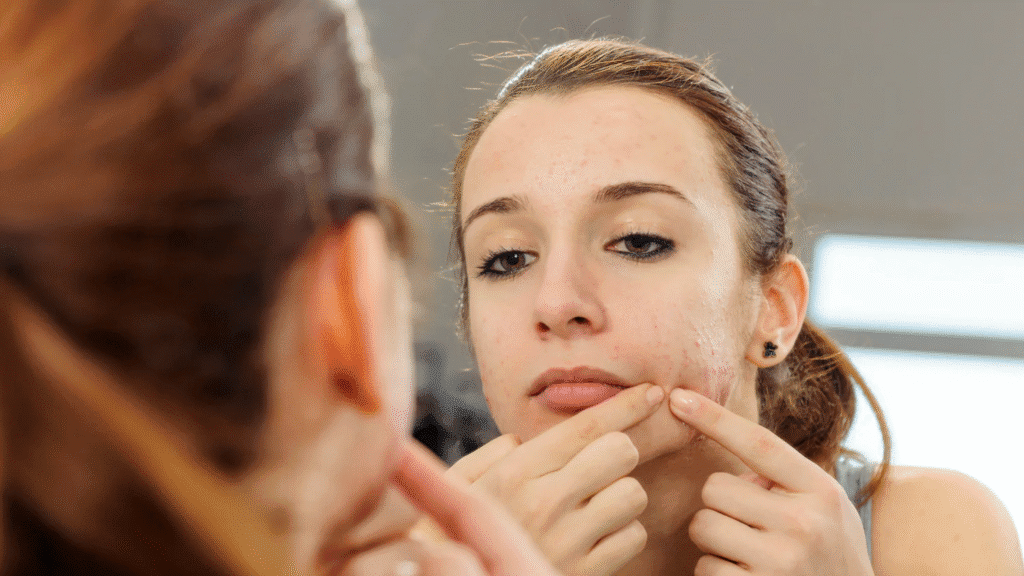
If you’re using equipment such as headphones or sports gear that comes into direct contact with your face, make sure to wipe them down before use. These items can accumulate dirt, oils, and bacteria, which can transfer to your skin, clogging pores and causing breakouts. Always bring disinfectant wipes to the gym, or use alcohol wipes to clean your gear thoroughly before each use.
4. Wipe Down Shared Exercise Equipment
Before using any shared gym equipment, it’s a good idea to wipe it down with a disinfectant. Even though gym-goers are encouraged to clean up after themselves, not everyone follows this rule. By wiping down equipment, you can reduce exposure to bacteria, dirt, and oils that may have been left by previous users. Focus on areas like handles, seats, or headrests that may come into contact with your face or body.

5. Avoid Touching Your Face During a Workout
During a workout, avoid touching your face as much as possible. Your hands come into contact with various surfaces throughout the day, and touching your face with hands that may be covered in bacteria, oils, or dirt can cause breakouts. Try to make it a habit to keep your hands away from your face while exercising to reduce the chances of transferring impurities to your skin.
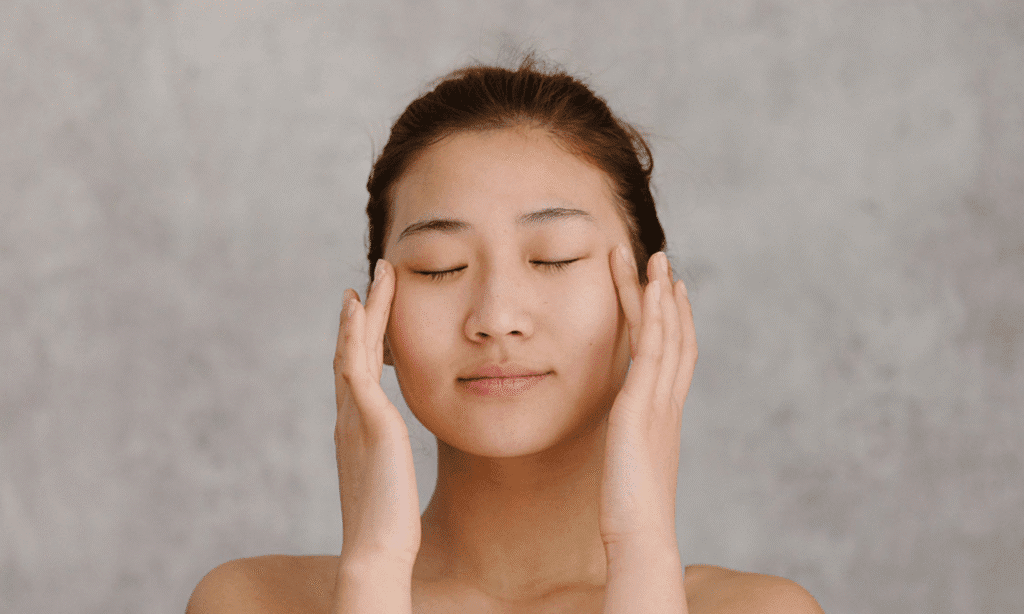
6. Wear Loose, Moisture-Wicking Clothes

Tight, sweaty clothes trap moisture against your skin, which can create the perfect conditions for acne to develop. A type of yeast, known as Malassezia, thrives in these warm, moist environments. This yeast overgrowth can cause a type of fungal acne that is often misdiagnosed as bacterial acne, leading to improper treatments. To avoid this, wear loose-fitting, moisture-wicking clothes that allow your skin to breathe. These fabrics help wick sweat away from the body, keeping your skin dry and reducing the risk of fungal breakouts.
7. Change Out of Sweaty Clothes Immediately
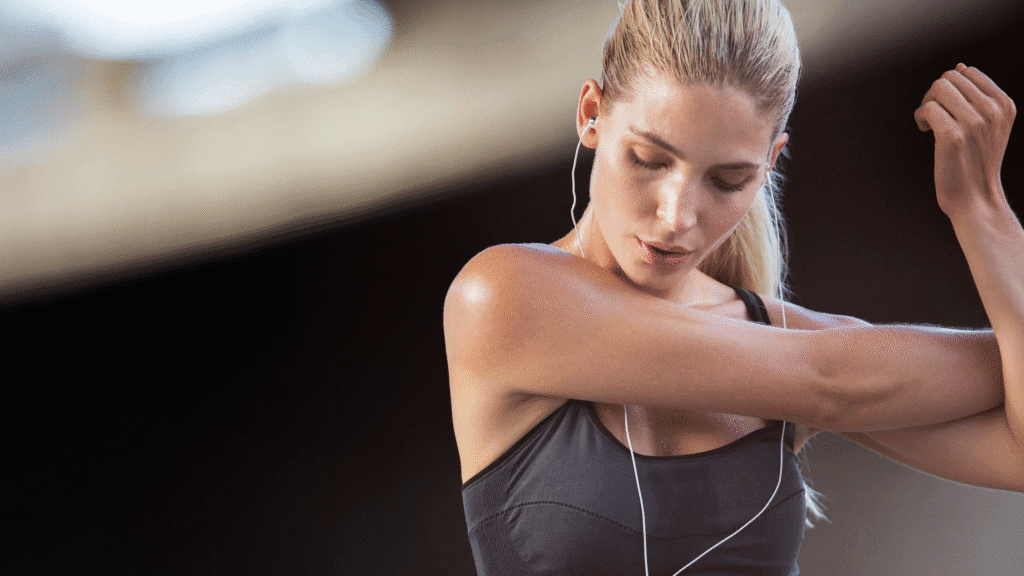
After your workout, change out of sweaty clothes as soon as possible. Keeping your damp workout clothes on for too long can trap sweat, oils, and bacteria, allowing them to transfer to your skin. This increases the likelihood of clogged pores and breakouts. Be sure to launder your clothes before wearing them again, as oils and dirt can get trapped in the fabric, leading to future skin problems.
8. Shower After Your Workout

Whenever possible, take a shower after your workout to remove sweat, oil, dirt, and bacteria that may have accumulated on your skin. Dr. Elizabeth M. Damstetter, an assistant professor of dermatology, suggests using cleansers containing benzoyl peroxide to cleanse acne-prone skin. Benzoyl peroxide works by reducing the number of acne-causing bacteria on the skin. If you find benzoyl peroxide too harsh, consider using a gentle, oil-free cleanser or micellar water to cleanse your skin after a workout.
If you’re unable to shower immediately, at least wash your face thoroughly with a gentle cleanser to help remove oils and bacteria. This will help keep your pores from getting clogged and prevent acne breakouts.
9. Use an Over-the-Counter Retinoid

Retinoids are vitamin A derivatives that can be very effective in treating acne. They increase the turnover of skin cells, helping to prevent clogged pores. Over-the-counter retinoids like adapalene (Differin) are widely available and can be used daily to reduce inflammation and unclog pores. For more stubborn acne, stronger retinoids such as tazarotene (Tazorac) or tretinoin (Retin-A) are available with a prescription. These medications help clear acne and also improve skin texture and reduce wrinkles.
10. See a Dermatologist If Needed
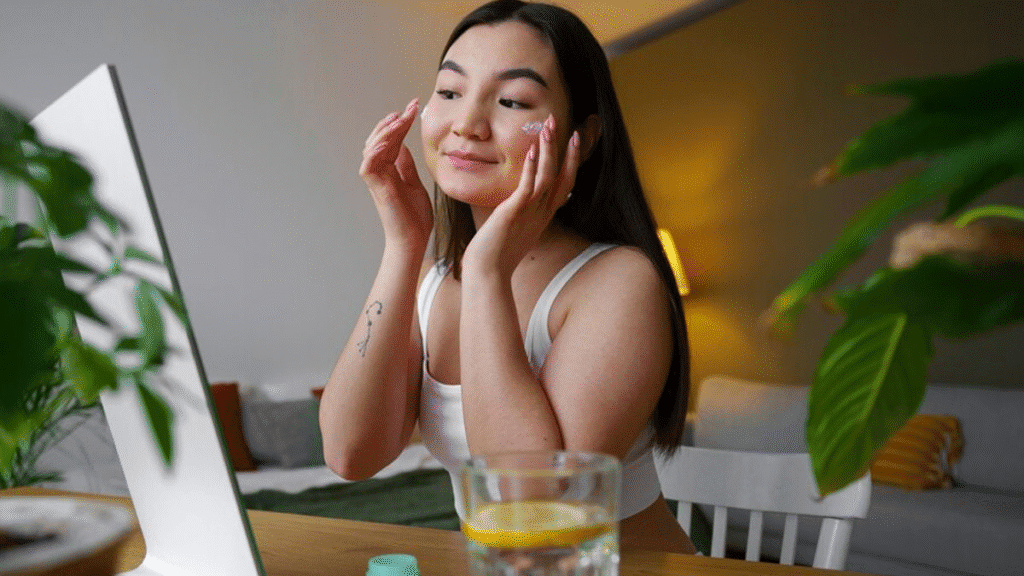
If you’ve tried all of the above tips and your acne continues to persist, it may be time to consult a dermatologist. A dermatologist can prescribe stronger medications, such as oral antibiotics or topical treatments, to manage acne. They can also help with other issues that may be contributing to your breakouts, such as excessive sweating. In cases where acne has caused scarring or discoloration, a dermatologist can offer treatments to help reduce scarring and even out skin tone.
Also Read : Winter Skin Woes: How Cold Weather Impacts Your Skin and How to Combat It



